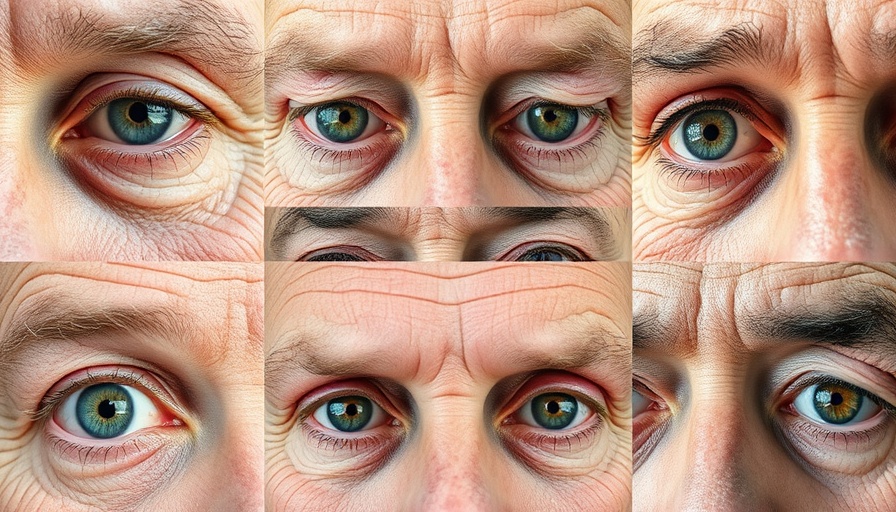
Understanding Vision Health in Older Adults
June is Cataract Awareness Month, bringing to light the crucial vision issues that many older adults face, notably cataracts, glaucoma, and age-related macular degeneration (AMD). As people age, maintaining eye health becomes increasingly important, and fortunately, advancements in medical science have made it possible to address these conditions effectively. With the right understanding and timely medical intervention, preserving one’s vision is more achievable than ever.
Cataracts: The Clouded Lens of Aging
Approximately 20.5 million Americans age 40 and older are estimated to have cataracts, according to the CDC. As cataracts develop, individuals may experience blurred vision, diminished night vision, and difficulty distinguishing colors. The primary solution involves a simple surgical procedure where the cloudy lens is replaced with an intraocular lens (IOL). Remarkably, more than 6 million Americans undergo this surgery each year, making it one of the most common surgical procedures in the U.S.
Dr. Michelle Andreoli, an ophthalmologist affiliated with Northwestern Medicine, points out that while the basic technique of cataract surgery has remained consistent for years, newer lens options such as toric lenses for astigmatism and multifocal lenses have emerged. This evolution allows for personalized care, enabling patients to regain not just clarity in vision but also to adapt to their specific visual needs.
Glaucoma: The Silent Vision Thief
Glaucoma is often termed the 'silent thief of sight' because it quietly progresses without noticeable symptoms until significant damage has occurred. An estimated 4.2 million Americans are living with glaucoma, making regular eye exams crucial for early detection and management. Treatment typically involves eye drops to decrease intraocular pressure, though surgery is increasingly becoming a preferred option.
The integration of Minimally Invasive Glaucoma Surgery (MIGS) offers a practical approach, allowing physicians to combine cataract surgery with glaucoma treatment in one seamless procedure. This innovation not only addresses the clouded lens but also alleviates eye pressure in a single operation. Dr. Andreoli emphasizes that the paradigm has shifted from a lifelong dependency on eye drops to a focus on improving the quality of life by potentially relieving patients from them altogether.
Age-Related Macular Degeneration: Protecting Central Vision
Almost 20 million Americans suffer from AMD, a leading cause of severe vision loss among older adults. This condition affects the retina's macula, leading to progressive loss of central vision. With dry AMD being the more prevalent type, proactive measures such as nutritional supplementation have shown promise in managing symptoms. However, the wet form, characterized by the growth of abnormal blood vessels, can lead to more rapid vision loss.
Recent advancements entail treatments that focus on halting the progression of wet AMD through medications that target leaking blood vessels. The National Eye Institute emphasizes the importance of routine check-ups, which allow for timely interventions that can manage the disease and maintain quality of life.
Future Directions: Staying Ahead of Vision Issues
With the ongoing developments in ophthalmology, the future holds great promise for older adults striving to maintain their vision. Innovations in surgical techniques, combined therapies for glaucoma and cataracts, and novel approaches to AMD treatment are paving the way for enhanced patient outcomes. Maintaining awareness and seeking regular eye exams can significantly influence the preservation of vision and overall quality of life.
Furthermore, promoting healthy lifestyle choices—such as proper nutrition, exercise, and protection from UV light—will contribute to eye health as individuals age.
Conclusion: Proactive Vision Health
Understanding the importance of eye health, especially as we age, cannot be overstated. By staying informed about eye conditions and advocating for regular screenings, seniors can take meaningful steps toward safeguarding their vision. Whether it's exploring treatment options for cataracts, managing glaucoma, or staying vigilant about macular degeneration, proactivity is key. Remember, it’s never too late—or too early—to prioritize your vision health!
 Add Row
Add Row  Add
Add 




 Add Row
Add Row  Add
Add 

Write A Comment